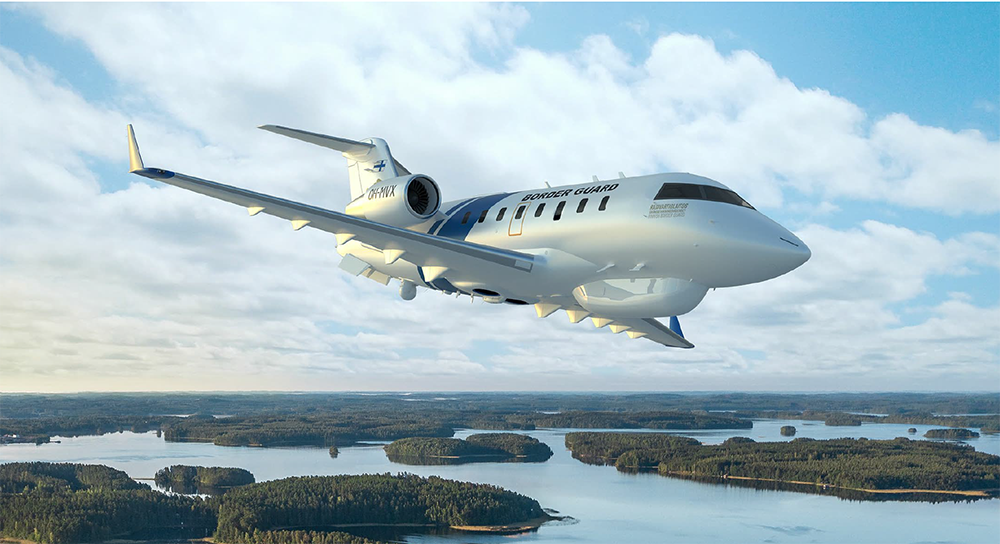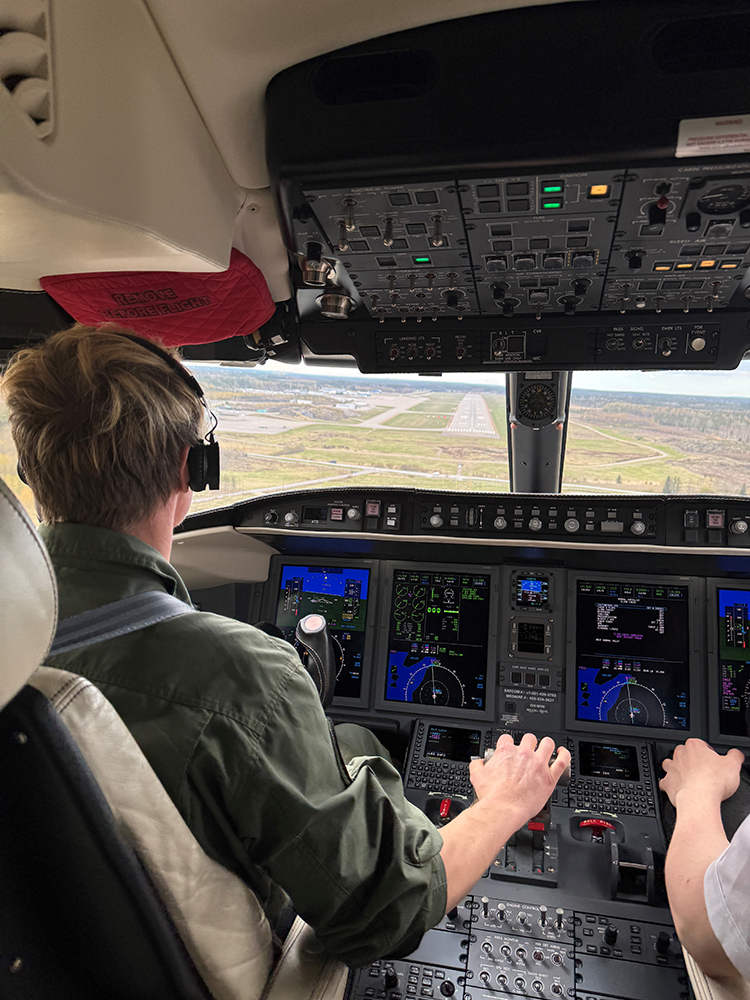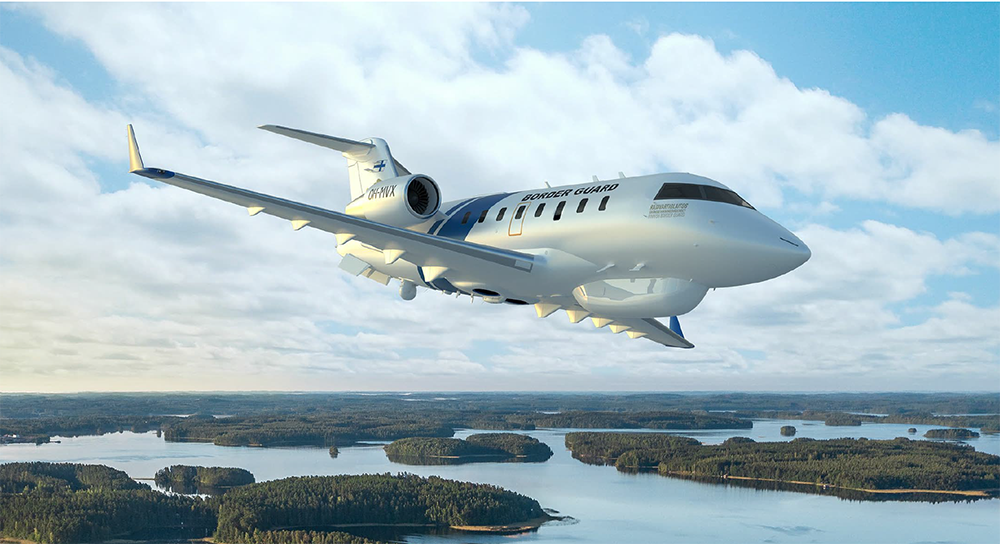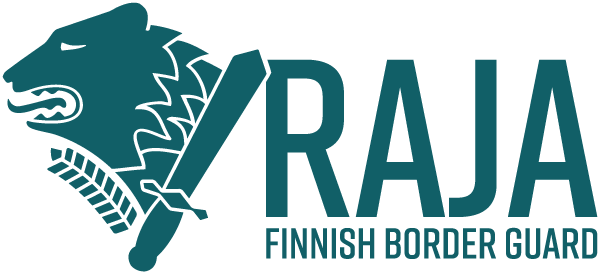MVX Design Phase Completed

The MVX program involves the construction of two multi-role aircraft based on the Bombardier Challenger 650 business jet for the Finnish Border Guard. These aircraft will replace the Dornier 228 surveillance planes introduced in 1995. The new aircraft will offer significantly enhanced performance in both platform capabilities and surveillance technology.
From Design to Production
The U.S.-based Sierra Nevada Corporation (SNC) won the competitive bidding process. SNC will integrate an extensive sensor and performance package into the aircraft manufactured by Canadian company Bombardier. The delivery agreement was signed in June 2024 in Helsinki.
Since the signing, SNC has finalized and refined its integration plans. In March 2025, SNC held the Critical Design Review (CDR), during which the final design data was presented for approval. Experts from the Finnish Border Guard analyzed the material and assessed whether the solution meets the specified performance requirements and is suitable for the intended operational use.
On April 11, 2025, the MVX steering group approved the CDR results and the system specifications. With this approval, SNC can now proceed to the production phase. In practice, this means finalizing installation plans, testing equipment, and ultimately performing system integrations once the first aircraft is delivered to SNC.
Bombardier will deliver a business jet to SNC, which will then be modified to meet the Finnish Border Guard’s requirements. The aircraft’s interior will be stripped and replaced with systems and structures ordered by the Border Guard.

MVX personnel at the CDR event organized by SNC in March 2025.
Delivery Schedule
Production of the first aircraft unit for the Finnish Border Guard began at Bombardier’s Montreal facility in late 2024, with delivery to SNC scheduled for late 2025. SNC will carry out the required modifications, equipment installations, and certifications at its facilities in Hagerstown, Maryland. According to the latest estimates, the first aircraft will be ready for delivery to Finland in March 2027.
The slightly revised delivery schedule will not affect or require adjustments to the Finnish Border Guard’s flight operations. The current Dornier fleet can continue to operate effectively until the new replacements are delivered.
Training Has Commenced
The new aircraft type requires significant new expertise. Pilots and mechanics of the Border Guard Aviation Unit must complete a type course before operating the aircraft. A type course trains users on a new aircraft model they have not previously flown. Operators will also be trained in the use of surveillance systems. The pilots undergoing type training will receive both theoretical and simulator instruction on the new aircraft. Initially, a core group of pilots and mechanics will be trained to oversee the aircraft’s production monitoring, acceptance, and operational deployment.
Additional operational personnel will be trained closer to the delivery date. The first pilots participated in the type course in Canada in April 2025. Since the course only includes simulator training, pilots will receive practical training on an actual aircraft from Jetflite, a Finnish business aviation company owned by the Wihuri Group. Jetflite has extensive experience with business jet operations worldwide, including Challenger aircraft.

The Finnish Border Guard’s first Challenger 650 pilots receiving flight training from Finnish company Jetflite.
Capability Building is a Long-Term Process
Acquiring equipment alone does not build capability. Material assets are only one part of overall operational readiness. A new aircraft means new processes for the entire organization. Updating personnel skills through training is just one example. The MVX program also introduces new and more advanced sensors that must be learned. Modern sensors generate massive amounts of data, which must be processed in new ways. At the same time, the operating environment is constantly evolving, and the organization must adapt accordingly.
Full operational capability with the new multi-role aircraft is not achieved merely by delivering the planes to Finland and providing type ratings to pilots. There will be a long learning curve. However, the new aircraft offer immense potential and will be involved in a wide range of safety-critical missions for decades to come.

Concept image of the modified Bombardier Challenger 650 multi-role aircraft.
MVX Sensors and Capabilities
| EO/IR | Identifiying and tracking targets. |
| Radar | Detecting targets at sea, imaging targets over land. |
| RTV | Detecting and geolocating radio and radar signals. |
| SLAR | Discharge and small target detection at sea. |
| Multipectral imager | Discharge quantification, support to other authorities. |
| Direction finder | Emergency beacon geolocation. |
| AIS | Automatic Identification System for surface vessels. |
| MMS | Mission Management System for integrating all sensor system data. |
| SATCOM, Datalin | Real time data transmission. |
| Drop Capability | Emergency dinghies and buoys. |
| Obs. windows | 2 enlarged windows for visual lookout and photography. |
| Adaptability | Different configuratios sor surveillance, transport, medevac and combinations. |
| Interoperability | Interfaces to FBG and FDF C4ISR systems. |



